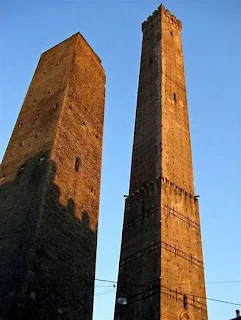Bologna, one of Italy's most fascinating cities, carries the nickname "La Turrita", or "the city of towers." While many visitors today know Bologna for its culinary treasures or prestigious university, few realize its medieval skyline once rivaled the modern-day skyscrapers of Manhattan. Between the 12th and 13th centuries, Bologna boasted as many as 180 towers, built by the city's wealthiest families as both symbols of status and strategic defense mechanisms during the turbulent Guelph and Ghibelline conflicts.
The Towers: A Testament to Medieval Prestige
The towers of Bologna were far more than architectural feats; they were statements of power. Constructed primarily of brick and mortar, their towering heights symbolized the wealth and influence of the families who built them. These structures also served as fortresses during periods of factional violence, offering a vantage point to surveil enemy movements and defend against attacks.
The rivalry among noble families often pushed these constructions higher and higher, creating a competitive skyline. Some towers reached dizzying heights of over 60 meters (197 feet). For comparison, the iconic Leaning Tower of Pisa stands at just 57 meters tall.
A Changing Skyline
Despite their former glory, Bologna’s medieval skyline is no longer the forest of towers it once was. Over the centuries, many of these towering structures fell victim to neglect, natural disasters, or deliberate destruction. Wars, economic shifts, and urban development took their toll, and many towers were dismantled or shortened to adapt to modern needs. Today, only 24 towers remain, a shadow of Bologna’s original grandeur. Yet, each surviving structure holds a unique story and contributes to the city’s historical charm.
The Asinelli and Garisenda Towers: Symbols of Bologna
Two of the most famous and best-preserved towers are the Torre degli Asinelli and the Torre della Garisenda, standing side by side in the city center.
- Torre degli Asinelli, built in the early 12th century, is the tallest tower in Bologna, standing at 97 meters (318 feet). Visitors can climb its 498 steps to enjoy a breathtaking panoramic view of the city.
- Torre della Garisenda, its shorter companion, is notable for its striking lean. Originally 60 meters tall, it was reduced to 48 meters due to safety concerns caused by the unstable foundation. Dante Alighieri even referenced this leaning tower in his Divine Comedy.
These two towers are enduring icons of Bologna and serve as reminders of the city’s medieval past.
Hidden Gems Among the Remaining Towers
While the Asinelli and Garisenda towers dominate the spotlight, other lesser-known towers are scattered throughout the city, often hidden in plain sight. Some are tucked away between modern buildings, while others have been integrated into the urban landscape in unexpected ways. For example:
- Torre Prendiparte: Known as "La Coronata," this 59-meter-high tower now functions as a boutique hotel, where guests can stay in a fully restored medieval space.
- Torre Azzoguidi: One of the few remaining towers in the Mercato di Mezzo area, it stands as part of a cluster known as the "Towers of Bologna."
Reviving “La Turrita”
In recent years, Bologna has made efforts to celebrate and preserve its architectural heritage. Several towers have been restored and opened to the public, offering an opportunity to rediscover their history and enjoy their spectacular views. Modern initiatives aim to educate locals and visitors alike about the city’s remarkable medieval past, emphasizing Bologna’s identity as “La Turrita.”
A Journey Through Time
Exploring Bologna’s towers is like stepping back into the Middle Ages, where the city’s skyline was a battleground for influence and honor. The surviving towers stand as silent witnesses to centuries of change, embodying the resilience of Bologna and its people. So, the next time you visit, look up—not just for the culinary delights, but for the towering remnants of history that make Bologna truly one of a kind.
Visit Bologna, the city of towers, and climb its medieval heights—your journey into history awaits!


No comments:
Post a Comment
Note: Only a member of this blog may post a comment.